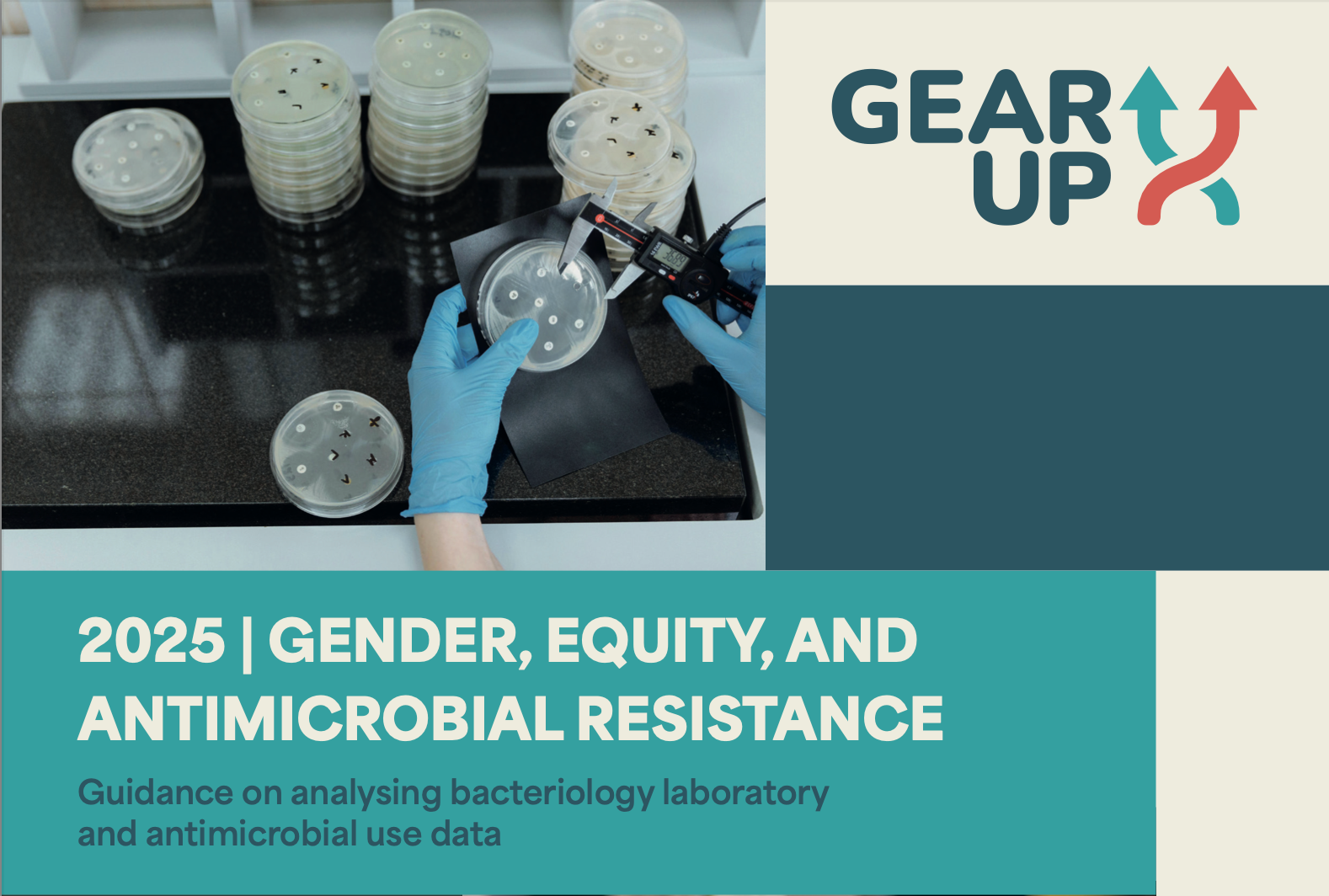Guidance on analysing bacteriology laboratory and antimicrobial use data
Antimicrobial resistance (AMR) is a major global public health problem that makes antimicrobial drugs less effective and leads to higher illness, death, and healthcare costs. One of the important components of addressing AMR is systematic collection, analysis, and interpretation of AMR and antimicrobial use (AMU) data to inform evidence-based interventions. However, current AMR and AMU surveillance systems often overlook the influence of sociodemographic factors, including gender and equity dimensions, on resistance and prescribing patterns. Biological factors, occupational exposures, disability status, differences in healthcare access, education level, and socioeconomic status can lead
to disparities in AMR and AMU between men, women and people of other genders, including among marginalised groups. Integrating gender and equity analysis into AMR and AMU data assessment can uncover hidden trends, ensuring more targeted and inclusive policy responses.
AMR surveillance data are collected by laboratories when bacteriological investigations are carried out. Surveillance focuses on pathogens rather than people and are currently not designed to tell us much about those who have the infections. In addition, AMR surveillance data is liable to a number of known and suspected biases. Some of these biases arise because data is collected mainly at the tertiary level of the health system where bacteriology laboratory services are available. Such tertiary healthcare facilities are usually located in urban areas, and which patients can access them impacts how representative of the population the specimens that are collected are. In the settings where unique patient identifiers are unavailable, there is the potential for data duplication, which can skew results. Therefore, caution is advised when interpreting findings derived from analysis of AMR surveillance data. Care must be taken not to extrapolate far beyond the specific population and health system setting where the specimens were collected.
GEAR up has undertaken preliminary analysis of AMR surveillance data and AMU data disaggregated by sex and age. Using this experience, we developed this guideline with the aim of providing a structured, stepwise approach to analysing AMR and AMU data with attention to gender and equity indicators. The expected outcome is to demonstrate the importance of sex-disaggregated and equity-focused data analysis from clinical and health systems perspectives. By identifying equity disparities, it is hoped that healthcare providers can tailor local antibiotic stewardship and policymakers can formulate improved national policy to reduce inequities in AMR burden.





